Well, I am “freshly” returned from the FAC Nats in Geneseo, NY. It was so great to be there, since the last time all of us Rubber Scale crazies were there was in 2019 and the last Nats (an every-two-year thing) was in 2018. For those of you that have been living in a cave for the last 4 years, these yearly events (non-Nats and Nats) were cancelled because of the COVID pandemic. For half a minute, this year’s event was threatened as we could not get the use of SUNY-Geneseo for our lodging and banquet requirements. So the Nats this year had a bit of the flavor on a non-Nats, with lower attendance and on-field ceremonies.
BUT! We were there and we did some spectacular flying in the best weather we have had in many, many years. On to my personal report. Oh… sit down, have a cup of coffee (or whatever), this is bound to be a long read (just imagine how long it took me to write it!)
Travel There
Coming out of the McCook meet in Muncie (June), Winn Moore proposed that he and I ride together. This would save us both some money on gas, since prices are relatively high. There were a few downsides to this idea that we had to overcome:
1: I would travel from Battle Creek (SW Michigan) to Oxford, MI (northeast of Pontiac – which is well north of Detroit) to pick up Winn. He said it makes no sense for him to go west (to my place) when we were to travel east (to Geneseo), and I said it makes no sense for me to travel north when I need to go south to the turnpike, but he won out (this time). I drove the 2.5 hours to his place on Monday afternoon so we could pack Monday evening and be on our way early Tuesday morning (I stayed at his house Monday night).
2: We both needed to take our chase scooters (we both have a Honda Ruckus – highly recommended) and we only suspected that we could get them both in my 5’x8′ trailer WITH my sales goods. Yes, they would both fit lengthwise and width-wise, but I had installed a shelf on the side of the trailer that holds all of my piece-parts for sale. The vertical height of this shelf off the floor just might interfere with the bikes. Also, I usually store my rubber and kits for sale under this shelf, next to my bike – this space would now hopefully (and problematically) be taken up by Winn’s bike – if it fit under the shelf! Oh, and I only had two randomly-placed tie-downs on the floor to the trailer. But I bought more to install upon arrival.
We did that first thing Monday evening after arrival. We remove the two existing and installed the now-six tie-downs in logical places so we could strap two bikes in trailer. We strapped mine in, facing forward, on the non-shelf side of the trailer. Then we BACKED Winn’s into the trailer so the handlebars would not clash and strapped his down. At first the handlebars would not fit under the shelf, but cinching the bike down to near-full compression of the suspension allows then to fit.
We then loaded the trailer with tables and canopies and got to the business of fitting all of Winn’s model boxes and tool boxes into my car.
3: Usually, I fill up my vehicle (was an Expedition, but now is a Navigator) with all of my flying planes so that I can fly whatever I want. But knowing that this wouldn’t work for TWO modelers, I had to pare down my models to the bare minimum. The first thing I did coming out of the contest in Muncie at the end of June was to print a Nats schedule and mark what events I wanted to fly and which models I wanted to use. I pared down my collection so that I was taking only one model per event (except I took two Peanuts – they’re small and fit into the boxes). This gave me 18 models. This might sound like a lot, but I usually take about twice that many to any given contest.
The next challenge was to fit them into the minimum space. I used one large cardboard Amazon box and one of my foam boxes. The cardboard box is deep, so I could make that a two-level box, if I made supports and a shelf for the second layer. So I had three layers of space in two boxes for 18 models. I carefully packed each layer, successfully getting all 18 models (including four models of over 30″ span) in these three layers. I took pictures of each layer so that I could replicate it for the return trip.
By doing this, I was able to pack up half of the back of my vehicle with my models, tool box, two large containers of rubber, one container of short kits and a could small sundry boxes. Winn’s models would have to fit into the other half of the truck – or in the vertical open area above the bikes in the trailer.
Making this long story a little shorter – all of his five or six boxes fit inside the truck and we didn’t have to experiment with packing the above the bikes in the trailer. Here’s a tip – the interior of a late-model Expedition or Navigator is huge; larger than you think.
Not wanting to go through Canada (I was carrying a lot of sales goods, no need to be stopped at the border and risk delays), we drove two-plus hours south to get to Ohio so we could turn east and drive around the southern shore of Lake Erie to just south of Buffalo where we took a two-lane state highway the final hour or so through bucolic western New York, arriving in Geneseo 8 hours or so after we left Oxford. Of course, we chatted about all variety of things, but mostly about model airplanes and the upcoming contest. For those not “in the know”, the FAC Nats are the epitome of our contests every two years. This is the BIG ONE for us – the most important and significant event in the FAC. We were excited and happy to be going back and we had high hopes of winning everything (and selling all my product!)
We left at 7am and arrived at the flying field at 3:30pm. We would meet up with Clete Schenkel, Mike Smith and Pat Murray as they arrived later in the evening. We would be staying in the Pat Murray Bed & Breakfast (his large RV) for the week. The benefits to this are that we are usually first on the field in the morning and last off the field at night. This leaves plenty of time to get ready early and test fly late.
Day Zero
The “first” day (Wednesday) is a non-flying day. We got up early with no particular rush. In the late morning, we helped set up the judging area in the main hangar, directing the tent rental setup, and setting up all my sales goods (hoping to sell one MILLION Dollars – haha!)
We got all of our models out and had them checked for compliance and/or judged for Scale. There were many beautiful models presented from around the country – two countries, as Canada was represented, too. You can see some of them on the FAC-GHQ Facebook feed, as I posted snapshots of everything that was on display. John Koptonak also posted many photos of the displayed models on the FAC-GHQ Facebook page.
We wrapped up in late afternoon, packing all up and clearing the hangar. Then many went to the flying field for test flying and leisure time. There was the threat of rain in the evening (after three separate brief showers during the day), but it eventually calmed and cleared.
Flying
I had a light schedule for Day One (Thursday) – Old Time Stick was the only mandatory Day One event for me. Friday and Saturday were absolutely full. And, by tradition, the Nats Scale events require 3 official flights (averaged) to be flown. So, ALL events were three flight events, plus testing. It was going to be a challenge to get everything in – and weather would play a part. All the Scale events were multi-day events. Some were two-day and some were three-day, so the modeler can pick what day they want to fly. If it was too windy on Day One, you can defer to Day Two. Or like me, if Day Two and Three are too busy, you can fly on Day One. So, I chose to fly my complicated and time consuming Jumbo Focke-Wulf 189 on Day One – After I flew Old Time Stick.
I think I flew two or three Test flights on my OT Stick Holy Ike and then went official. I put up three maxes and was sitting pretty in first place. By the time I got around to the Jumbo and doing additional testing, the breeze was starting to turn into a wind and I wouldn’t risk another flight in the wind. I logged one official flight on the FW-189 at 47 seconds. I was in first in that for most of the day, too – because no one else was foolish enough to fly Jumbo on Day One of Three. Here is a test flight from the previous evening. You can see it has wonderful potential, but still needs trimmed and then pack in more duration.
As Thursday wound down, it became evident that SEVEN flyers maxed out (three 2-minute flights) in Old Time Stick! This meant there would be a fly-off. The majority of the flyers involved and the management agreed to postpone the mass launch fly-off until the very first thing on Friday morning.
The seven of us gathered at 7:45am and went over the ground rules, wound for sound, lined up and launched seven stick models in close proximity. There were no crashes, but Duncan McBride and I, standing side by side, went right up together. His Korda C Stick Tractor was only inches above and in front of my Holy Ike. It was quite the sight to see and we both thought that propellers might chew planes, but we got clear. All seven got great altitude. I ended up 4th out of seven, the victim of my own caution, now giving full torque to the biggest motor in my fleet. Nonetheless, it was satisfying.
After that, I went right into Old Time Fuselage, flying my Hep Cat. This model has been a very consistent flyer – in calm or in wind – since I built it. It even won FAC OT Stick last summer at the AMA Outdoor Nats. I put up two maxes, but then… I dropped my third flight with an uncharacteristic 117 second flight. The tail end of the flight was in “down air” – caught in the back side of a thermal where the air is rotating toward the ground instead of up and away. That was a disappointment. But I watched the scoreboard. No one was maxing out. As the day came to a close, Ted Allebone has logged the same score – 357 – and we were tied for first. There would be another flyoff. The day was calm, so we could go at the end of the day or early in the morning. I was ready. But Ted had already packed up his model and it was packed in the front of the truck waiting for a return to Michigan. He declined a flyoff and took second place, giving me first.
Rounding out the second day, I flew my aging Stallion in Jumbo, one terrible flight with my Dime Scale Bird Dog, broke a motor winding my Caudron in the first round of the Greve Race, tossed my Falcon Special into the ground in the first round of the Goodyear races, flew three mediocre electric flights with my Fike Peanut in Power Scale, and three less-than-mediocre flights with my Heinkel JetCat.
I did fly my Jumbo Focke-Wulf on Friday – in WWII Combat! That was exciting. There were 25 or so pilots and they eliminated 7 (I think) in the first round. I made it to the second round! But I broke one motor while winding and was eliminated. Some commented that they were surprised that I would fly that model (and risk it) in Combat. But, if you can’t fly a stunning model in the biggest contest, what did you build it for?
The only up-side for the remainder of the day was my little Corsair Peanut. I logged something like a 57 second first flight, and added some clay to the tail for a floating glide resulting in a 76 second second flight. For the third flight, after about 20 seconds it caught a thermal and just cruised around in ever-heightening circles. I chased to the northern edge of the field to where the bean field started and watched the pretty flight. It was getting quite high and I felt I was seeing the last of my little Corsair, but all of a sudden, the prop locked and the model quickly spiraled down. The nose hit the dirt at about 1:45, but it sure seemed longer than that. Only the legendary Tom Hallman, flying a 35 bonus-point MiG-DIS was able to beat me. His three flights were all between 30 and 50 seconds, but he totaled 6 more points than me. I am very pleased to take second place in Peanut!
The third day was much like the second: fair weather and light breezes. It was overcast in the morning, but that gave way to clear skies. When we flew the National Air Races Mass Launch, as we finished winding, the air was perfect and bouyant. Pat Murray and I were hoping the Air Boss would get those watches started and not delay in giving us the “launch!” command. Streamers were rising and – OMG, it was perfect! Thankfully, Mike Escalante wasted no time in getting us into the air and all of us went right up into that thermal. Pat and I were right together, climbing higher and higher into the blue sky. For a time my Comper Swift was above his Lockheed Vega and we were enjoying the spectacle as the were rising right overhead. Unfortunately, my Comper has a built-in DT – warps in the wing cause it to go straight in the glide if upset in the least little bit. And that’s what happened – I got kicked out and started a slow descent to the south. I landed and ended up in third place behind Pat and Wally Farrel (2nd).
I tried to fly my Durham Stretch Limo in Embryo, but couldn’t get it trimmed right. Again, my schedule was packed, so I had to pick and choose what to fly and set that one aside, abandoning Embryo (more on the impact of this decision later). I turned to Half Wakefield and my Yankee IV. I got it trimmed satisfactorily and logged three good flights. I don’t recall what they were, but they were good flights, but not maxes, in a difficult category. That put me in first most of the day.
Our flying buddy, Mike Smith from Dayton, had been struggling earlier in the contest and, after hours the day before, he said he didn’t turn in times because they were poor performers. He is only 3 years into the hobby. I told him he shouldn’t hesitate or be embarrassed to turn in times. It helps him understand where he is compared to others, and it helps the club with overall statistics about how many people participate and so on. That must have taken hold, because he logged his flight times on his half-size Keil Kraft Gipsy – for his first kanone, knocking me into second place! Well done, Mike!
Next up was my King Harry in 2-Bit. This is another consistent performer for me. Of course, not having flown some of these models for 2 years makes you relearn and readjust. But King Harry #2 is just as reliable as #1 was (before it was lost at Geneseo in 2019). I put up a triple max that was not matched and I took first place.
My last flight of the contest was my most outstanding flight. NoCal was flown on the last day. This is a fun, but tricky event – there is no maximum flight time. In June, my Folkerts SK-2 “Toots” had two 5-minute flights that landed on the field and yet, my three-flight total was surpassed by Wally Farrell with an 11-minute fly-away. This Folkerts NoCal is one of the straightest and strongest NoCals I ever built. It has bee solid and warp-free since the day I built it a year ago. While it did pop out of the thermals in June, I decided to try to enforce that behavior a little bit with another small pea of clay to the nose. I planned for performance like this: a- climb out a little and hook a thermal, b- ride that thermal for a good while and when the thermal weakens, c- drop the nose and glide down for a good score like I had seen in Muncie last month. Here’s what wikipedia says about “best laid plans”:
(idiomatic) A proverbial expression used to signify the futility of making detailed plans when the ability to fully or even partially execute them is uncertain
I wound up the long loop of 1/8″ rubber that drives the 7″ Peck prop. I asked Winn to time me and checked the streamer. I hustled out a few steps and turned to Winn, ready to launch – the streamer was going up. I called him again, “Winn, hey, are you ready? I want to catch this thermal!” A couple seconds and he was ready and I launched, hoping I wasn’t too far behind it – I wasn’t.
It wasn’t a real strong thermal, nor was it very large. My plane went up in small circles, steadily rising. I just sat in one spot for a long time; there was so little drift. Then I’d have to move to the next spot and sit on my bike with my head tilted way back, looking up into the blue sky flecked with small clouds. Slowly it drifted to the south east and I followed, trying not to lose sight of the little model. Three things helped me keep sight of it: yellow tissue, gloss clear spray, and very, very little drift.
As I got farther and farther south east on the field, I was going to run into the rocket people that were sharing the field. I had to figure out how to get around them, not lose the model, and stay in view of my timer, so he can keep the clock going. I navigated through their parked cars on the south edge of the filed and made it to the extreme southeast corner. I sat there for a long time and then the model started to drift NNE. I could still see it brightly in the sky and by carefully riding north I could keep an eye on it.
I got to a corner near the corn and stayed there. I knew this would be the last spot I would be watching from – and the last spot where I would see my little Folkerts. This plane was now just a flashing speck in the blue sky well east of the field above the college. The additional nose weight had no effect on the glide. At less than 10 grams on 62 square inches of wing area, the wing loading is so light that it didn’t take a strong thermal to carry it away. There was a hint about half way through the visible flight that it “might” be descending, but that didn’t last long – that’s when it started drifting NNE. It might have kicked out of one, but got picked up by another thermal. I can imagine that it was carried a good distance from the field, maybe even beyond the town of Geneseo.
I waved my arms vigorously (a signal to stop the watch) and rode back across the field due west to our base, and while it was sad to lose a great model, I was happy that I had logged a “Wally Farrell” type flight. Winn reported a 14:56 flight for 896 seconds. That was going to be hard to beat. In fact, it was roughly half again better than 2nd place. That is the second fly-away victory at the FAC Nat for me in NoCal. I won in 1998 with an 11-minute flight with a Hosler Fury. In fact, that was the last time that I won an event at the FAC Nats prior to this year.
Ceremony #1 – Final Flight
We have a tradition at the Biennial FAC Nats: we hold an evening ceremony for all of our flying friends that have passed since the previous Nats. This year that spanned clear back to 2018 – four years. In our hobby, that is mostly populated by old men, four years can suck up a lot of souls.
This year the ceremony was heart-wrenching. I personally read four names, three of which nearly close the lid on the old Stork Squadron from Cleveland, where I cut my teeth. Rich Weber, Del Balunek, and I are just about the last remaining members. Del no longer flies, and Rich has been out of the loop for a few years.
This is merely a representation of what this ceremony means. These people – all of these people – were flying friends to someone and some of them are leaving a friend or student as the only one remember their wonderful times together. This is a FACT of our group and it is much like watching that model fly away for the last time. We can be, should be, and were sad to have lost good friends, but we can look back and remember all of those good times flying.
This year, there were roughly THIRTY names read. It was terrible to be standing there, listening and hearing the names ring out, spoken through cracking voices and tears of those they have left behind. The most recent passing was of Jack Kacian, who died as Vance Gilbert stopped in at his house to visit him on Tuesday. Jack and I had only met a couple of times at Geneseo, but I considered him a friend, as I do all of my fellow modelers that we meet up with at Geneseo.
Thirty names…it left many of us crushed for the evening. But I am so glad to have known many of them and to be able to share in their memory. As we always say “use the good wood”.
Ceremony #2 – Awards
A couple of general award items as I get to my personal awards. We presented three Blue Maxes to worthy flyers this year. The Blue Max is awarded to every FACer that attains 16 victories in competition. You can read a more complete explanation HERE. These were to Duncan McBride (Florida), Mike Escalante (Maryland) and Luc Martin (Quebec).
There are only two remaining “100 Percenters” – those that have attended every FAC Nats since 1978: John Stott and Ross Mayo. Fernando Ramos and Ray Rakow are still living but did not attend this year.
Now on to ME. This was my best FAC Nats performance. You could say that attendance was down (about 80 registered) but that really does not make the accomplishment any less. As with all competitions, attendance is required and only those that attend can win. Here is what I won:
4th in Jumbo with my Stallion
4th in OT Stick with my Holy Ike
3rd in National Air Races with my Comper Swift
2nd in 1/2 Wake with my Yankee IV
2nd in FAC Peanut with my Corsair
1st in OT Fuselage with my Hep Cat
1st in 2-Bit with my King Harry
1st in NoCal with my Folkerts SK-2
During the setup for judging, I heard Sky Mayo remind all of the judges that there was a “beauty contest” for the best WWII model. I had a glimmer of hope that it might be me. After all I brought that big FW-189 – I had it judged, I flew it in Jumbo, I flew it in Combat. It is a subjective trophy (not performance-based) and maybe those that choose would choose me!
But, it was not to be. Wally Farrell won with his Arado E.530. Here is a photo of the winner next to my Focke-Wulf. Both are Jumbo 36″ wingspan models.
 But the evening was not over for me. There are three overall performance trophies: Scale Champion, Non-Scale Champion, and Grand Champion. A person needs to place high in many of the events in each category to win champion in each sub-category and then how they placed in both categories determines how they stand for Grand Champion.
But the evening was not over for me. There are three overall performance trophies: Scale Champion, Non-Scale Champion, and Grand Champion. A person needs to place high in many of the events in each category to win champion in each sub-category and then how they placed in both categories determines how they stand for Grand Champion.
I placed well in many of the Non-Scale events (OT Stick, OT Fuse, 2-Bit, 1/2 Wake). But would it be enough? I under-wound on the fly-off in Stick and ended up in fourth. I only placed second in 1/2 Wake. And I didn’t even fly in Embryo – Embryo carries the most weight as scores are factored by the number of flyers in a particular event – and Embryo is always the most popular FAC event. It turns out that my performance was good enough to win non-Scale Champion!
This has been a goal of mine since at least 2016. It has taken a lot of work and practice. I have models that max often and this was the start of it. For years I have been working and working on this at every large-field contest. Every flight in OT Stick, OT Fuse, 2-Bit, and Embryo has been trying to get to the point where I can be confident in placing in these events. I am a rather humble guy (I think?) and I don’t often say I am proud of things, but I am proud of this accomplishment. It is one of the highlights of my modeling career.
Afterthoughts
It was a long trip home – 12 hours from Geneseo to my house, by way of Oxford, MI and a return to Detroit due to road construction. I am tired. I have been writing this for about 4 hours. I still need to unpack my merchandise and models.
But the time was great. Importantly, it was shared with friends. Even the ride there and back was made better with someone riding along. I used to travel to Geneseo with my son, Jack, and we would talk excitedly on the way about what-might-come and on the way back we would discuss how to improve for the next time. I miss those days, but I now have new days full of memories.
I don’t know if I will be as successful in future contests, but does it matter? Am I upset about losing 1/2 Wake to Mike Smith? Not in the least! I’d like to think that I have had a hand in his success and even in that specific event. It’s not a bad thing to have someone new beat you, especially when you help them along.
I may never win Champion again, or even any event at the Nats, but I will still go and meet up with all of my friends and have a great time. And I’ll stand in that ceremonial ring and call out names of our flying friends that have Gone West with tears in my eyes again. If I have anything to say about it, this tradition will continue along at least as long as I can help push it into the future.
Speaking of the future, here is young Alex Kelly from San Antonio, TX and his Corsair – which he built – and flew successfully at the XXII FAC Nats in 2022. Note the legend, Wally Farrell, watching one of his flights in the background.





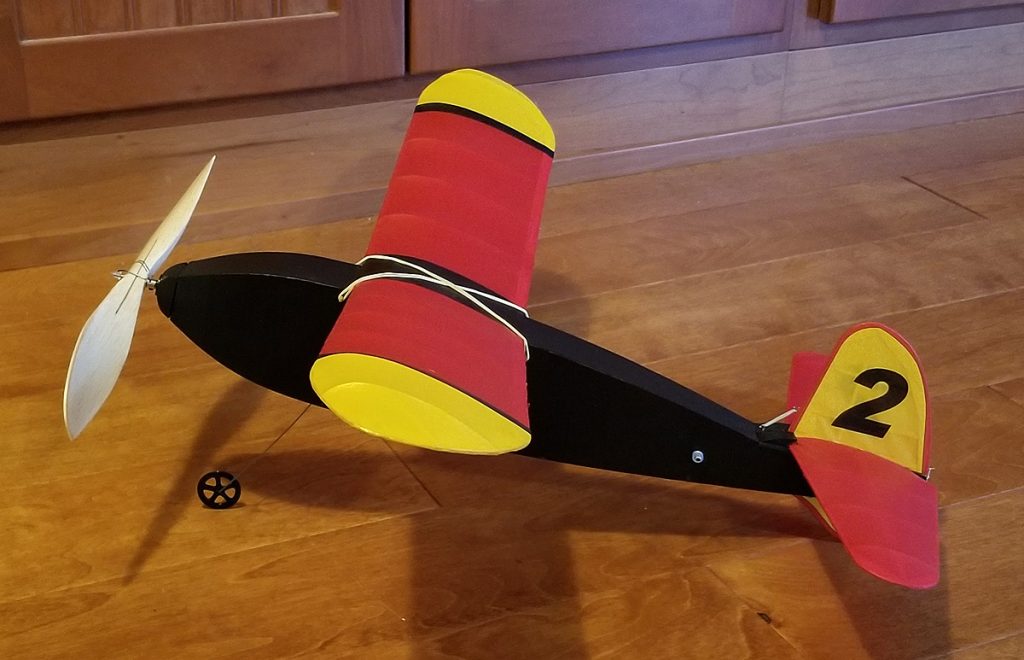
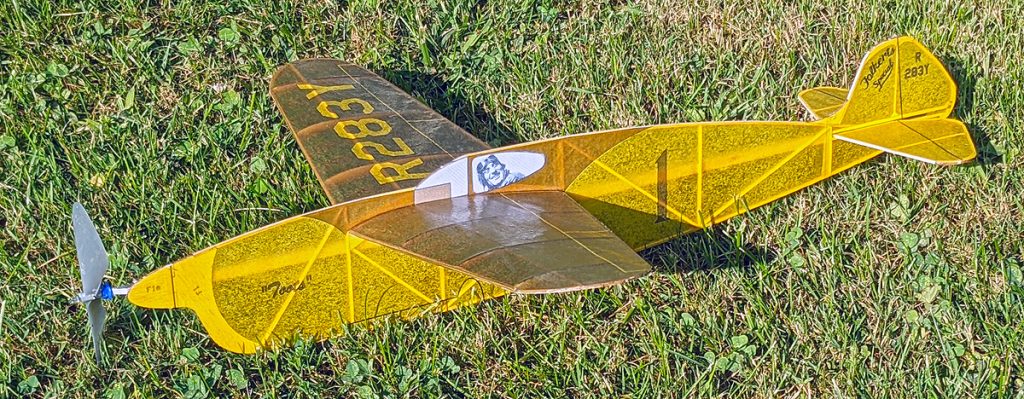
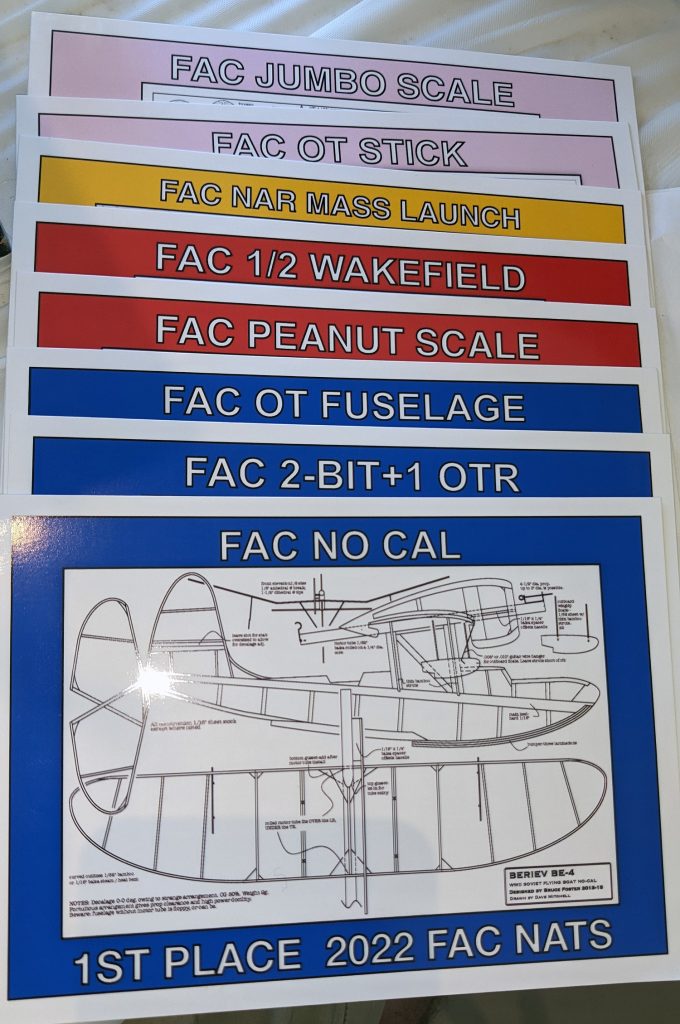
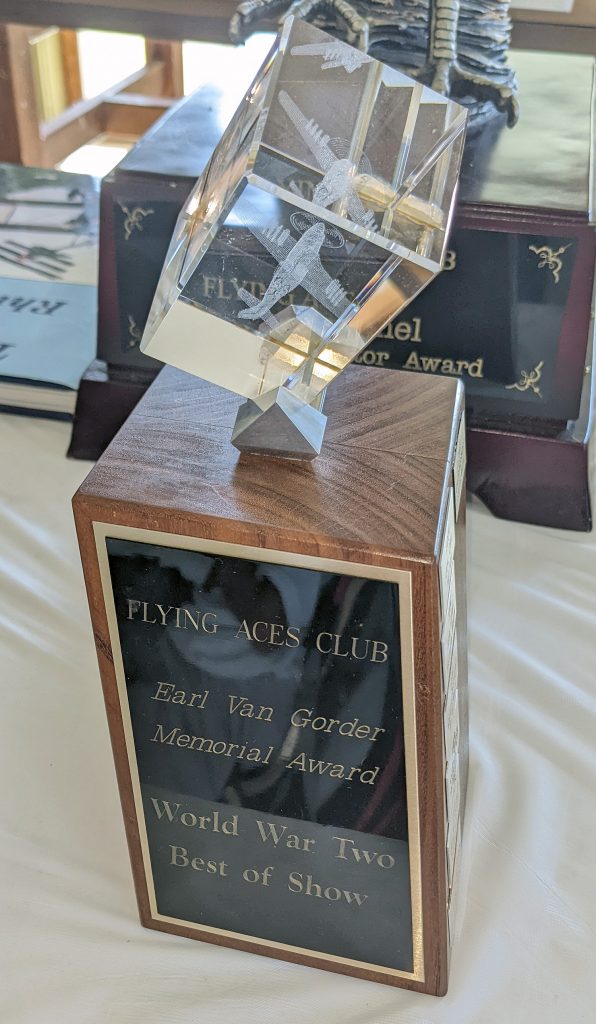

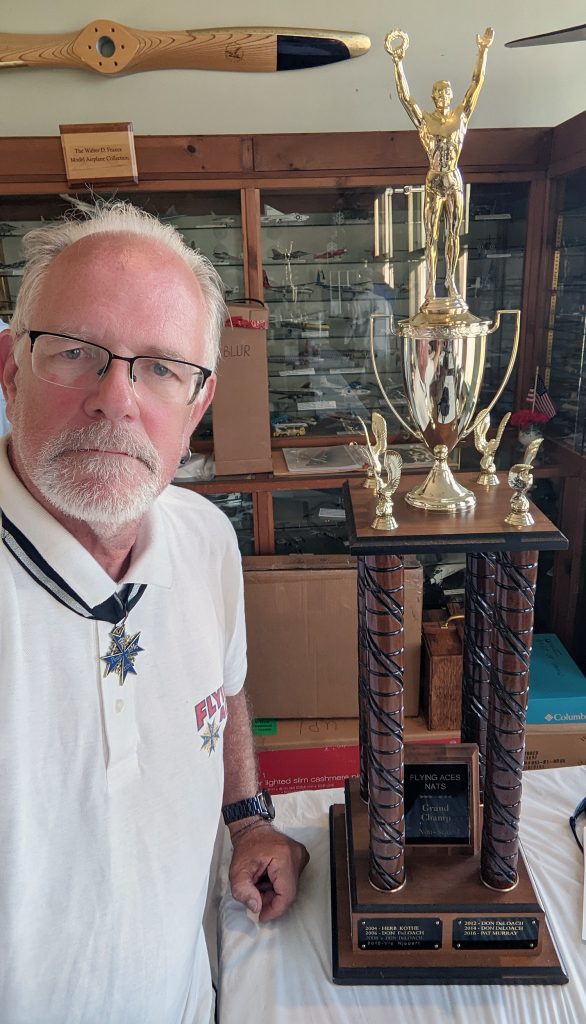

A wonderful reflection on your NATS experience, George! Thanks for taking the time to put it down.